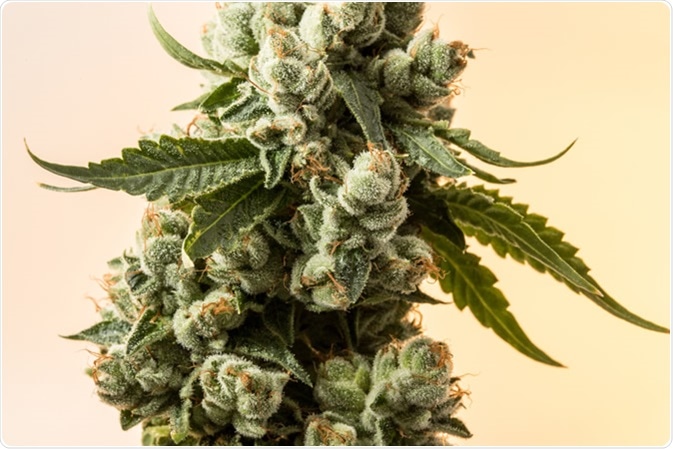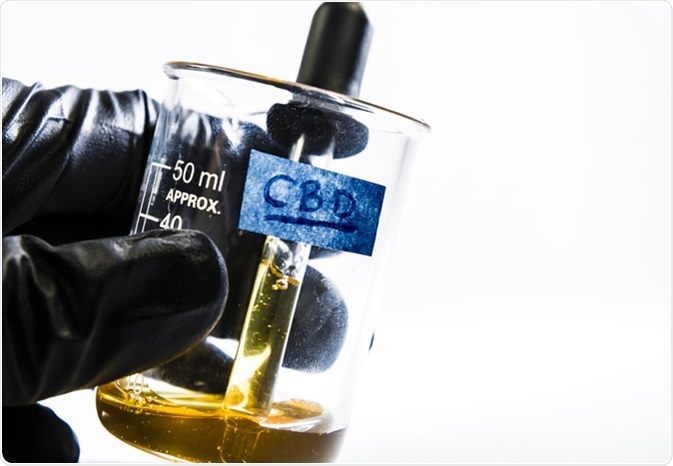Skip to:
Hemp (Cannabis sativa) seed oil is instrumental in the oil, food, pharmaceutical, cosmetics and fibers industries. Extraction of oil is varied, and the processes are limited in their efficiencies. A group from the Indian Institute of Technology Roorkee have carried out a comparative investigation of different extraction processes to determine the most appropriately suited for scale – as is required for commercial production.

Hemp (Cannabis sativa). Image Credit: 420MediaCo / Shutterstock
Often, variability in the physico-chemical properties, quantity and chemical composition of hemp seed oil results depending on the extraction process in question. Variability is problematic; the quality and composition of any oil is poignant, particularly as both the application and economics of hemp oil influence commercialization.
Hemp Oil Extraction Processes
Currently, there are five main extraction processes are deployed for hemp seed oil extraction. The pioneering and most conventional is Soxhlet (SOX) characterized by user- and economical- friendliness.
Percolation (PER) process is based on leaching – the out-diffusion of molecules from a material – yet there is little available literature on the use of this process in hemp oil extraction.
A departure from this is, supercritical fluid extraction (SFE) with solvent CO2. Supercritical fluids possess the ability to effuse through solids like a gas, and dissolve materials like a liquid.
Another trending technique is Ultrasonication (ULT) which as the name suggests, implements ultrasonic frequencies (>20 kHz); it offers the benefit of a reduced extraction time due to the dual effect of physical and chemical separation.
Finally, Pyrolysis (PYR) is a thermal decomposition technique for bio-oil production. The process is carried out in an inert atmosphere and the by-products are used in the petroleum industry. Its application in hemp oil extraction is less well known.

CBD oil extract from cannabis. Image Credit: Mitch M / Shutterstock
Extraction Procedure
Hemp seeds were subject to the SFE, ULT, SOX, PER and PYR extraction processes. All processes had the following extraction steps in common: preparation of raw materials, equipment set-up; input to extraction vessel and setup of input parameters. Subsequent steps were dependent on the extraction process; SFE required an addition of co-solvent, PER required the dissolution of solute, PYR was subject to bio-oil production and ULT followed an ultrasonic bath. Finally, oil was extracted both with and without solvent and the oil separated by rotary vacuum evaporator/ separating funnel. The ULT extraction required residual material to be subject to UTS followed by SOX.
Oil was subject to gas chromatography-mass spectrometry (GC-MS) analysis and characterized by Fourier Transform-Infrared Spectroscopy (FT-IR) and Field Emission Scanning Electron Microscopy (FESEM) which identify functional groups of each hemp seed extract. Comparison of extraction efficiency was based on economic yield (EY), chemical composition, functional group profile and industrial-scale economic assessment.
Best Extraction Process
The greatest EY was obtained by UTS, although SFE, SOX, STU and PER all showed comparative percentage EY. However, the team found that the Fatty acid contents were significantly influenced by the processes undertaken with variable range in ω-6 linoleic acid (14.91–52.39%), ω-3 α-linolenic acid (2.6–21.41%) and palmitic acid (0.55–3.01%). From the economic feasibility perspective SFE was the best rated technique followed by SOX, ULT, UTS and STU.
From their analysis, industrial-scale economic assessments of different extraction processes revealed the scope of commercialization and policy surrounding edible oil production. Of all the techniques analyzed by the team, both SFE and ULT extraction yielded the greatest purity with the optimal economical approach; both demonstrated comparable EYs. SFE was additionally evaluated as the most economically feasible process followed by SOX, ULT, UTS and STU.
From their study, the team identified the most viable extraction process in the derivation of hemp oil. For edible oils with similar characteristics, the same extraction processes are applicable. The team noted that the parameters scaled from the lab to industry may differ due to different heat and mass transfer regimes. As such, the team recommend large-scale extraction parameters. To conclude, the team suggest other areas of exploration – namely, quality control, cost reduction, shelf life and residual material use efficiency – for further optimization of hemp oil extraction.
Source
- Devi, V. et al. (2019) Comparative study of different extraction processes for hemp (Cannabis sativa) seed oil considering physical, chemical and industrial-scale economic aspects. Journal of Cleaner Production. https://doi.org/10.1016/j.jclepro.2018.10.036
Last Updated: Aug 30, 2019